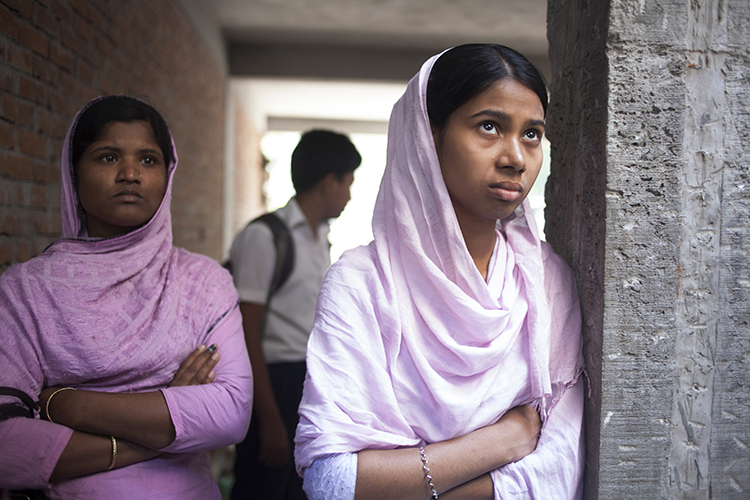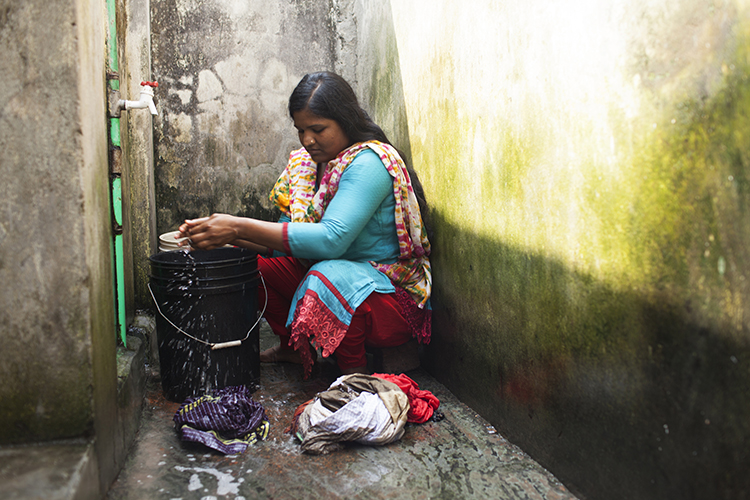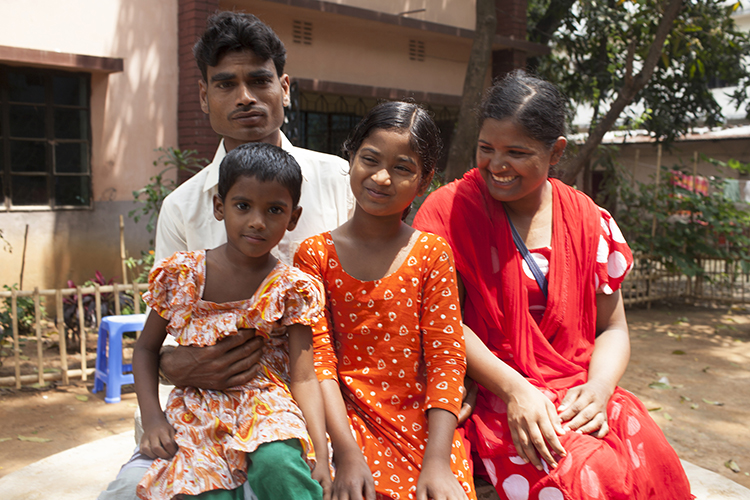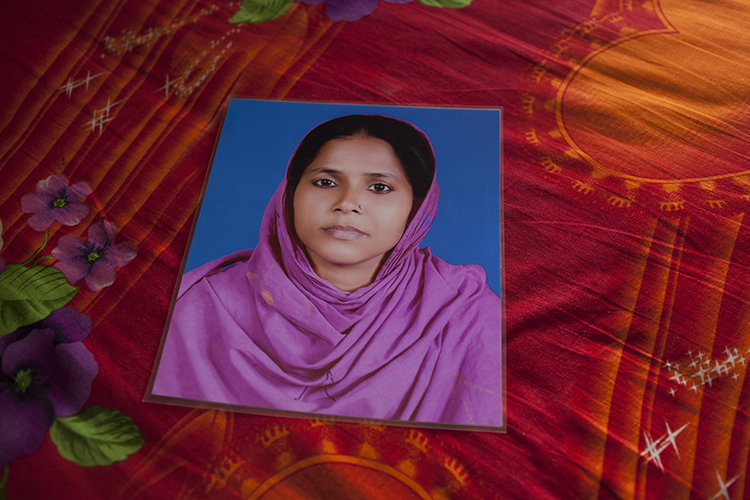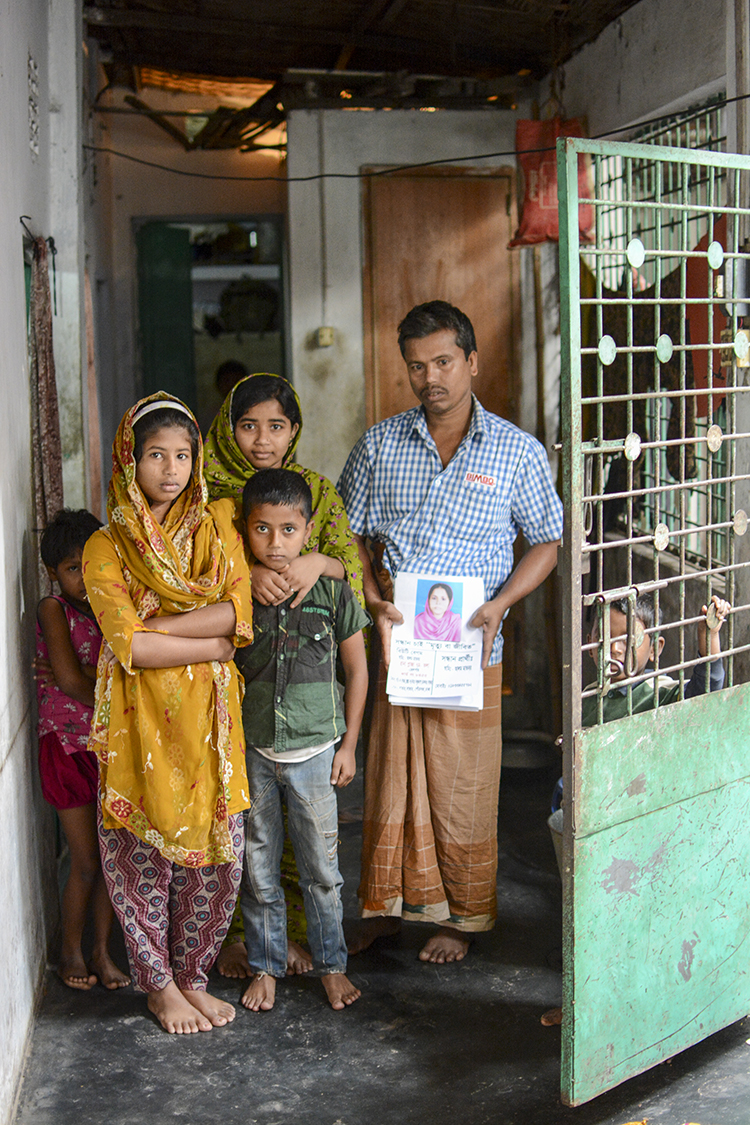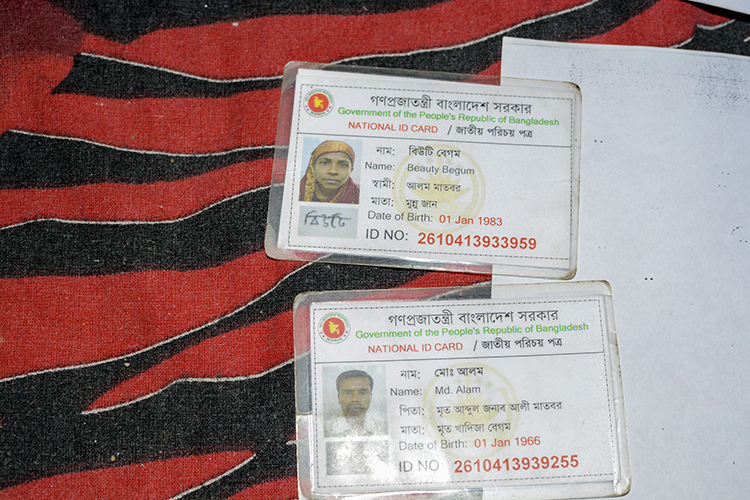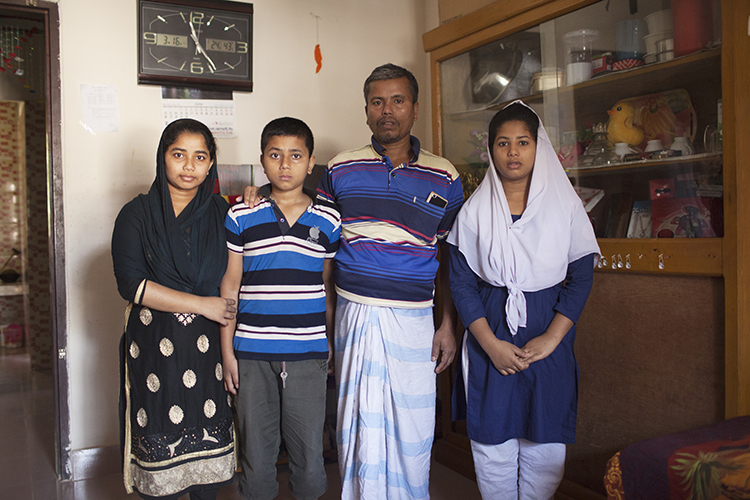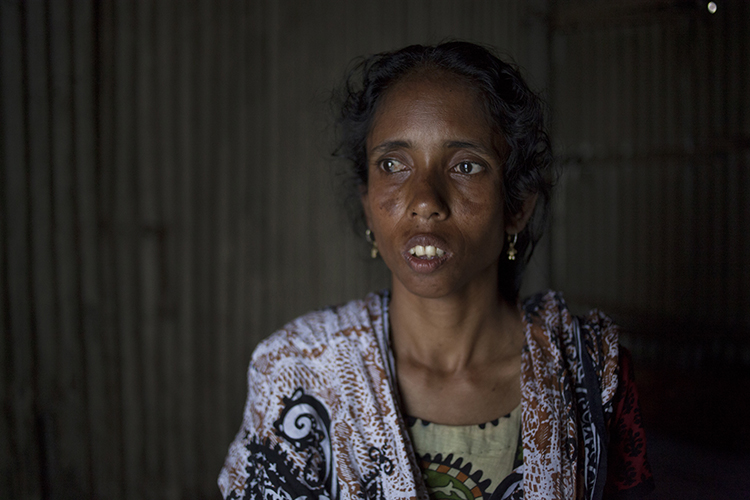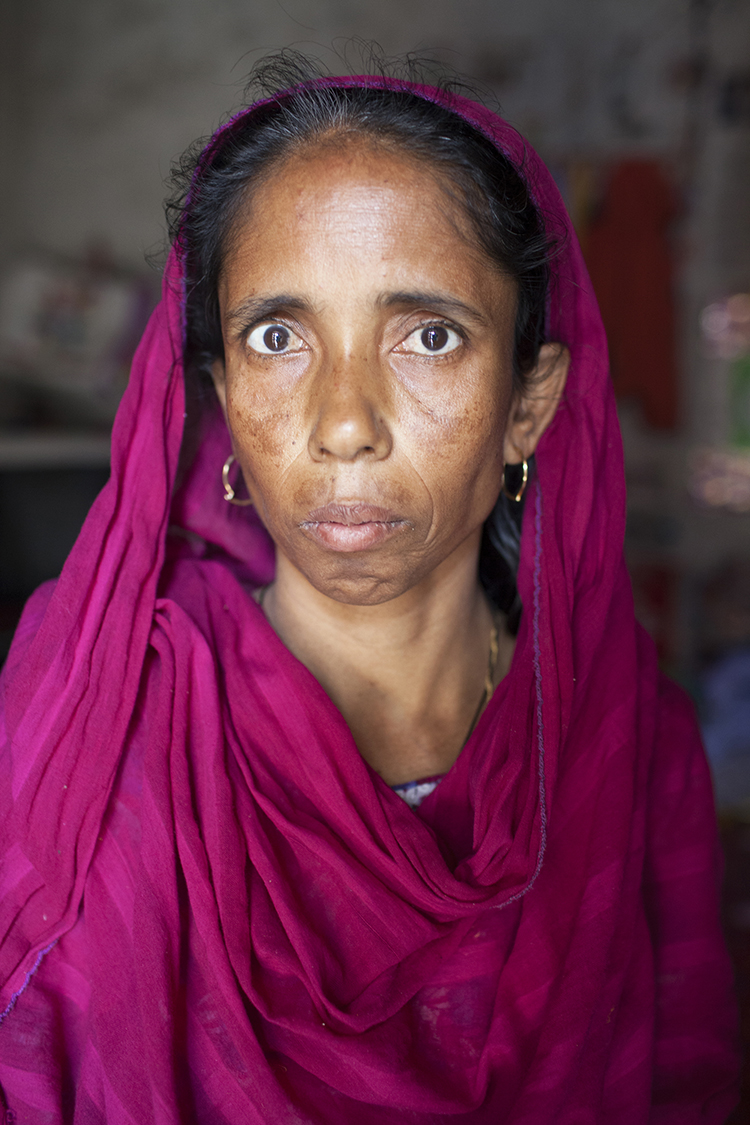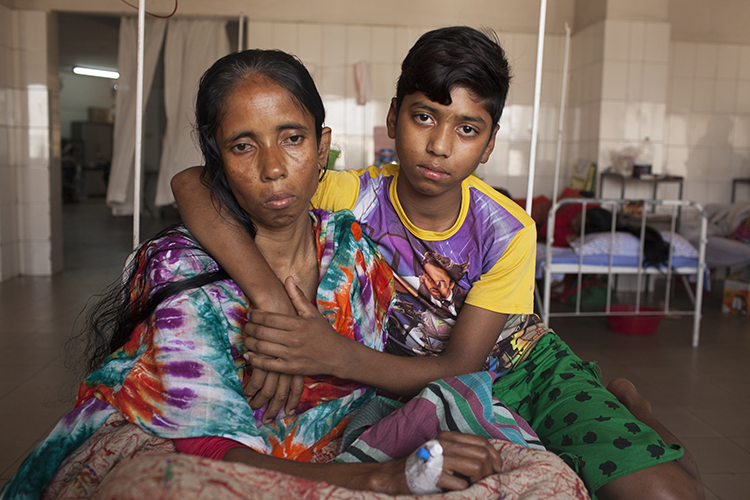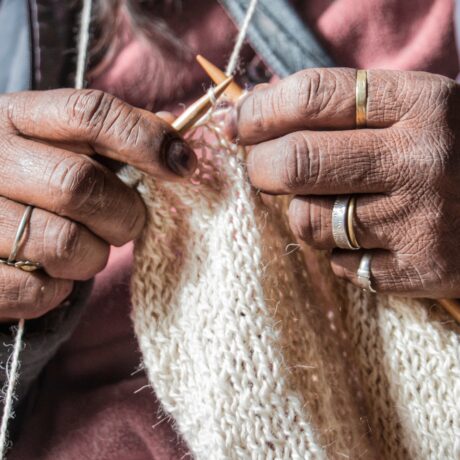Rana Plaza – The Survivors’ Stories
Four years ago, photographer and activist Taslima Akhter took the haunting photograph ‘Final Embrace’, showing two garment workers embracing in the rubble, killed by the collapse of the Rana Plaza factory complex in Dhaka, Bangladesh. Time magazine selected the photograph as one of the year’s top 10 images, saying “A Final Embrace captures Bangladesh’s united grief of the Rana Plaza disaster in a single shot. No one knows who these two people are. The relation between them remains unidentified”.
Taslima also took other photographs in the aftermath of the Rana Plaza collapse, talking to those rescued and injured, and the families of people who had died. Four years on, she has returned to meet some of those people again to find out how their lives had changed.
Rupaly worked as a machinist in the New Wave Style factory on the sixth floor of the Rana Plaza building. The day before, cracks had appeared on the walls, and the workers who arrived on the morning of 24 Apri 2013 refused to go in. The supervisors insisted that the situation wasn’t at all serious. “They said that should problems occur, we’d face them together”, Rupaly recalls. The manager of the factory also threatened to pay wages only for those who came to work as normal. Under pressure, she agreed to go in with the others.
They had only worked for a short while, when Rupaly felt that the floor beneath her feet started to sink. She recalls having tried to run, but the walls surrounding her collapsed. Everything was rumbling, and eventually she fell. The next thing she remembers is that she couldn’t move, and there were two bodies lying right next to her. She realised that there were living people nearby, yet she couldn’t see a thing. 15 hours later, she was saved from the ruins.
After the accident, Rupaly couldn’t work for a year. She managed to support herself financially with the help of donations given by private individuals, NGOs and the State. She also had the emotional support of her husband Farid and her daughters Fahmida, 10, and Fahima, 7. She returned to work in 2014 but the first garment factory to employ her soon caught on fire. Nobody died but it took a lot of courage to start working in a factory again.
Four years after the collapse of Rana Plaza, Rupaly feels that the memories of the accident are not haunting her as much. “I feel stronger and braver than before”, Rupaly says. Before the diaster, Rupaly didn’t give much thought to society and politics; she saw herself as being responsible for her own misfortune. Later, she came to understand that the factory owners and fashion brands bore the responsibility for the Rana Plaza factory collapse. Rupaly says that she now knows that workers and women have rights.
Rupaly has received compensation of £4,000, which she has used for buying a small property from her home village. She hopes to build a house for her family there.
Four years ago, Alam had a wife and three children. Although money was scarce, he felt happy. They lived in a small house in the suburban town of Savar, outside Dhaka. Alam drove a rickshaw and his wife, Beauty, worked in a garment factory called New Wave Styles.
A year later, Alam sat on the cold floor crying with his three children around him. The girls were wiping their tears on the sides of their scarves. The sun was shining behind the barred window and the neighbours were talking in the street. Alam’s family was just one of many who had lost their mother.
The children talked quietly about their dreams: Farzana wants to become a teacher, Afsana a doctor and Abdullah an engineer. Alam touches the ripped pieces of paper on the floor: his wife’s identity card and her work contract – the only proof of her existence and of her presence in the building called Rana Plaza.
Beauty’s body was never recovered from the ruins. She was one of 100 missing workers whose families were not granted any compensation for two years. Finally, Alam’s claim that his wife had been in the building was believed and he received 1 million Bangladeshi Takas (£9,760).
Alam now has a new wife, Shahnaj. He has set up a depot where drivers can store their rickshaws where he earns as much as 30,000 Takas (£290) a month, which is more than ever before. In their old home, they used to share a stove with the neighbours and eat their meals on the floor, but now Alam lives in a better apartment with furniture and a kitchen. The children have grown; they go to school and he’s able to save money for their future.
However, Alam’s world will never be as simple as it was before. It’s now filled with the injustice that he knows exists everywhere, not only in Savar or Bangladesh. The rich oppress the poor the world over. Both domestic and international factory owners and brands push the workers to work overtime, with no regard for safety. Bosses punish workers even for the tiniest mistakes, whereas the bosses themselves are never punished. The owner of the Rana Plaza factory, Sohel Rana, even though he ordered workers to go inside the building on that fateful Wednesday four years ago, has yet to be sentenced. Likewise, the sellers, buyers and the Bangladeshi government still shake hands with each other. “Life is not easy, so we need to find things out and know as much as possible”, Alam says. “Otherwise, there’s no way we can go on.”
Alam has managed to get his family’s life back in order, although he still feels the darkness inside him. He no longer has anyone to share his thoughts with. Beauty could understand him in a very special way, which is something that better living conditions will never replace.
Four years ago, Asma sat alongside dozens of other machinists. Phantom Apparels was located on the fourth floor of the Rana Plaza factory complex. Asma had gone there along with the other workers, as she always did. After working for a few hours, her world collapsed. Asma fell down and was buried beneath the rubble. She was trapped there for 3 days, drinking her urine in order to prevent dehydration. Then she was saved.
She received compensation of 200,000 Takas (£1950), part of which she used for rebuilding her life. She also invested 20,000 Takas (£195) in the name of her son, Arif. Asma’s husband moved away two years ago and she was left alone with the children. According to Asma, he left because she no longer earned as much as before. Asma cannot go back to her old profession. The factory is a trauma she doesn’t dare to face. She currently earns 4,000 Takas (£46) a month as a domestic helper, working in two different families near her own neighbourhood in Savar, only a stone’s throw away from the place where she was dug out four years ago.
Now her 13 year old son earns more than Asma. In addition to the rent of a few thousand Takas, Asma and Arif send 1,500 Takas (£15) every month to her daughter Sumaya, who now lives with her relatives in Asma’s home village.
Like many women who have left their homes in search of work, Asma, now 29, dreams of returning to her home village, to live in a house of her own with a small piece of land. But her memories still keep her awake at night. At the end of February 2017, Asma’s condition worsened and she was hospitalised. The doctors diagnosed her as suffering from malnutrition and deep trauma. So now she has to stay in the hospital and recover. Her son Arif is the only person who is visiting her.




